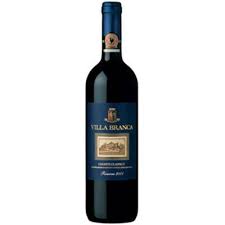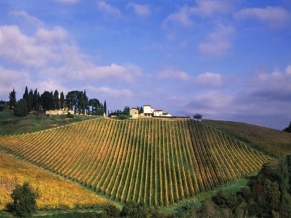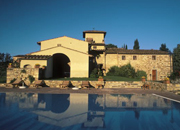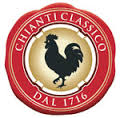
Villa Branca Chiant Classico Riserva DOCG– Tuscany
Villa Branca is located just outside the village of Mercatale Val di Pesa, in the hills surrounding Florence.
 It is owned by the Branca family, of Fernet Branca fame, and the property has been hugely influential in the renaissance of the Chianti Classico region. There has been extensive replanting of vineyards and the cellars have been totally renovated.
It is owned by the Branca family, of Fernet Branca fame, and the property has been hugely influential in the renaissance of the Chianti Classico region. There has been extensive replanting of vineyards and the cellars have been totally renovated.

The estate has 65 hectares of vineyards and concentrates on two wines – Chianti Classico and a Chianti Classico Riserva, which is made only in the best years.
COLOR: ruby red loaded with purple hues.
AROMA: initially intense, then spicy and elegant scents prevail, penetrating, with fragrant aromas of flowers and small red berries.
FLAVOR: a harmonious, soft and smooth taste for a well-structured wine.
Chianti Classico Riserva is a wine resulting from long aging in casks and bottles, characterized by a ruby red color shading into garnet. Its bouquet is persistent, with crispy fruity fragrances. On the palate, it is pleasantly full-bodied and well-structured.
 Chianti Classico is the heartland of the Chianti wine region – its traditional and longest-established viticultural area. The term classico is used in this way in several Italian wine regions (Orvieto and Valpolicella, for example), although Chianti is almost certainly the most famous example. This fame is due not just to the high quality of the wines, but also to the classico zone’s iconic Tuscan landscape and winemaking traditions. The typical Chianti Classico wine is a ruby-red, Sangiovese-based wine with aromas of violets and cherries and a hint of earthy spice.
Chianti Classico is the heartland of the Chianti wine region – its traditional and longest-established viticultural area. The term classico is used in this way in several Italian wine regions (Orvieto and Valpolicella, for example), although Chianti is almost certainly the most famous example. This fame is due not just to the high quality of the wines, but also to the classico zone’s iconic Tuscan landscape and winemaking traditions. The typical Chianti Classico wine is a ruby-red, Sangiovese-based wine with aromas of violets and cherries and a hint of earthy spice.

Chianti Classico’s black cock
Bottles of Chianti Classico wine are marked by the DOCG‘s black cock logo. While this symbol has a clear practical application (setting the wines visually apart from standard Chianti), it also has a romanticized and much-told history. Legend has it that, in the 13th Century, the warring provinces of Florence and Siena found a novel way to solve their ongoing border disputes. They agreed to a race; when the first cockerel crowed at dawn, each city would send out its fastest rider bound for the rival city. Where the two riders met would mark the new provincial boundary. However, the cunning Florentines gained a head start by starving their (black) cock to make him sing earlier, weighting the outcome in Florence’s favor. The modern-day Chianti Classico viticultural area now covers almost all land between Siena and Florence, buffered at each end by the Colli Fiorentini and Colli Senesi production zones.